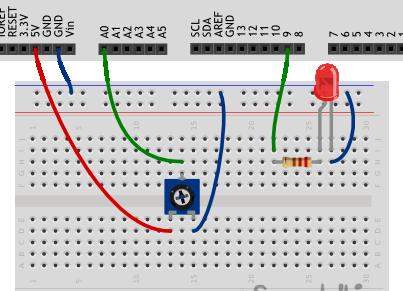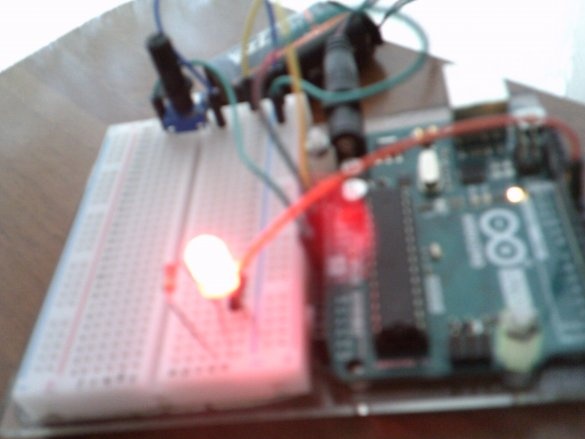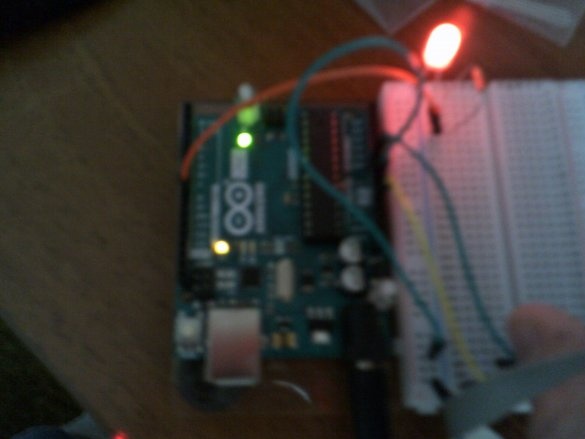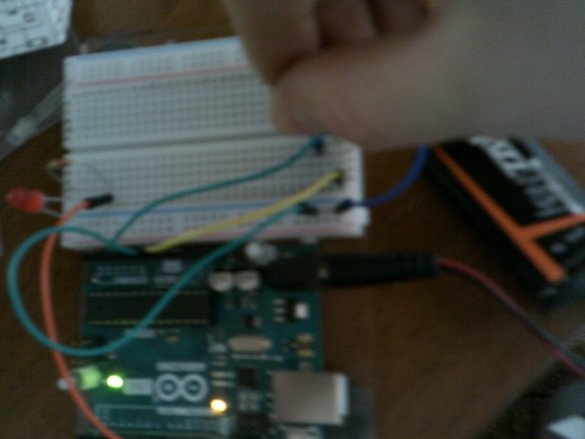1.Arduino (in my case, Uno)
2.Breadboar or as it is also called solderless breadboard
3.LED of any color for a voltage of 3 volts
4.Cable for programming
5. Potentiometer
6. jumper wires
7. 220 ohm resistor
so let’s transgress, first you need to program the arduino
Here is a sketch:
// give reasonable names for pins with LED
// and potentiometer (English potentiometer or just “pot”)
#define LED_PIN 9
#define POT_PIN A0
void setup ()
{
// pin with LED - output, as before ...
pinMode (LED_PIN, OUTPUT);
// ... but the pin with the potentiometer should be an input
// (English "input"): we want to read the voltage,
// issued by him
pinMode (POT_PIN, INPUT);
}
void loop ()
{
// declare that further we will use 2 variables with
// names rotation and brightness, and what we will store in them
// integers (English "integer", abbreviated simply as "int")
int rotation, brightness;
// read the rotation voltage from the potentiometer in rotation:
// microcontroller will give a number from 0 to 1023
// proportional to the angle of rotation of the handle
rotation = analogRead (POT_PIN);
// in brightness, write the rotation value obtained earlier
// divided by 4. Since we wanted to store in variables
// integer values, the fractional part of the division will be discarded.
// As a result, we get an integer from 0 to 255
brightness = rotation / 4;
// output the result to the LED
analogWrite (LED_PIN, brightness);
}then you need to connect everything according to this scheme;

And roughly so I got
I think you liked this article and I suggest you participate in the survey below, but that's it for me
TILL
END




